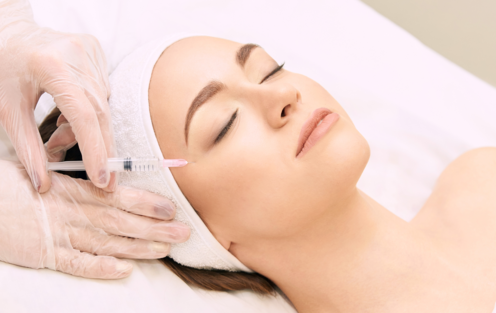What Is Microdermabrasion?
To revitalize the skin, a specialized applicator with an abrasive surface is used to
gently sand away the skin's thick outer layer.
To achieve the same results as utilizing the abrasive surface, another method of
microdermabrasion uses suction to spray small particles of sodium bicarbonate or
aluminium oxide. Continue reading to find out more about the process.
For whom is microdermabrasion intended?
Microdermabrasion is thought to be safe for the majority of skin tones and types. Those who have any of the following skin issues may decide to have the procedure:
- fine lines and wrinkles
- hyperpigmentation, age spots and brown spots
- enlarged pores and blackheads
- acne and acne scars
- stretch marks
- dull-looking skin complexion
- uneven skin tone and texture
- melasma
- sun damage

Risks and side effects of microdermabrasion
It could be necessary to postpone microdermabrasion for those who have taken the acne
medication isotretinoin within the last six months. They are more likely to experience
side effects including scarring.
Any area of skin that is changing, growing, bleeding, or otherwise altering should be
discussed with a physician. These problems may be signs of skin cancer.
Following microdermabrasion, one might observe:
- skin swelling
- skin redness, similar to sunburn
- bruising
- a burning or stinging sensation
- increased sensitivity of the skin to sunlight
How does microdermabrasion work?
An hour or so is often required for the in-office technique known as microdermabrasion.
Usually, a licensed skin care specialist does it, and she or he may or may not be
supervised by a medical practitioner. Your state will determine how to proceed with
this.
For microdermabrasion, an anaesthetic or a numbing medication is not required.
You will be seated on a reclining recliner for the duration of your appointment. In the
targeted locations, your physician will use portable equipment to shave off the outer
layer of skin or lightly spray the particles. Your skin will be treated with sunscreen
and a moisturizer after the procedure.
MICRODERMABRASION
-
What does microdermabrasion do for your face?
Microdermabrasion treatments have several advantages and involve lightly sanding your skin with a minimally abrasive tool to remove the thicker, uneven outer layer. Stretch marks, discolouration, UV damage, and mild scarring can all be treated with this kind of skin rejuvenation.
-
How long does microdermabrasion last?
Usually, the treatment's benefits endure for one month. The duration of the effects is contingent upon your age and the degree to which you are reacting to the treatment; nonetheless, most patients find that routine checkups are scheduled every four weeks. -
Can you see the results after 1 microdermabrasion?
After just one microdermabrasion treatment, you might see an improvement in the appearance of your skin, but more sessions may be necessary to achieve the desired effects.
-
Is microdermabrasion Painful?
Microdermabrasion is painless. At most, you might have slight pain. The process has been likened to a rough cat tongue lick. Some describe it as a little pulling sensation on the skin, while others describe it as a grittier kind of facial massage.
Call on us for a CONSULTATION at :-
Satya Clinic
4301, Galleria Boulevard, opposite DLF Club,
DLF Phase IV, Sector 27,
Gurugram, Haryana 122002
Get Appointment at Our Gurgaon Clinic
9910094945 Satya Clinic
ED 38 /A Pitampura, Near Pitampura,
Madhuban Chowk, Delhi, 110034, India
Get Appointment at Our Delhi Clinic
9910094945